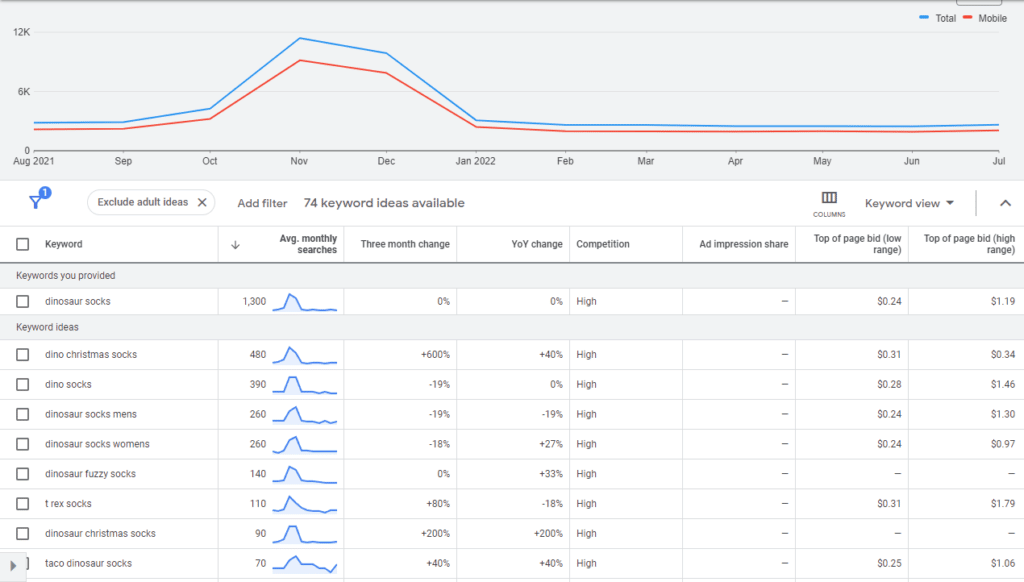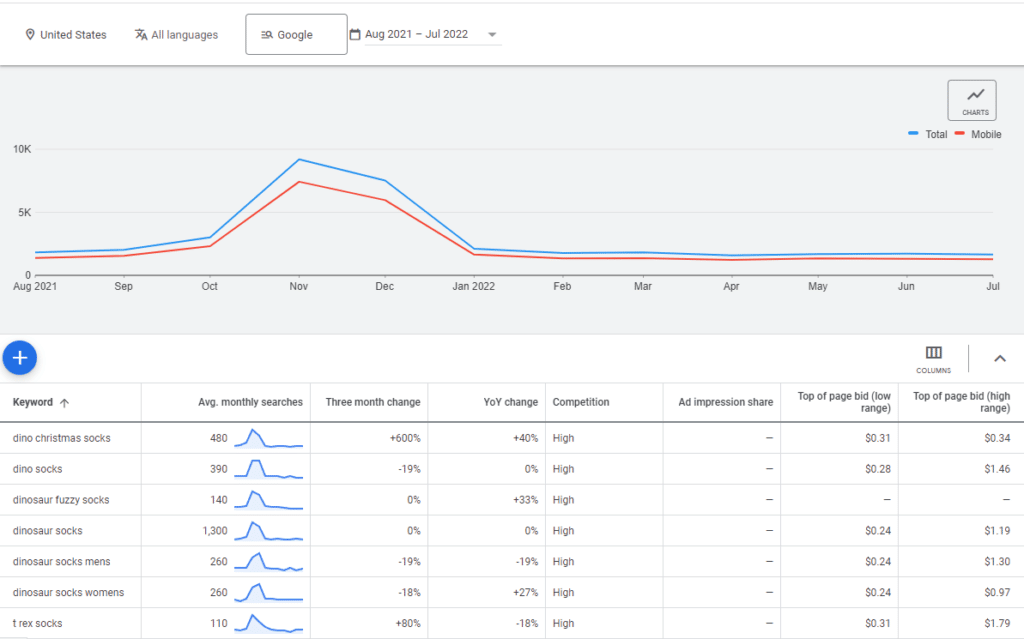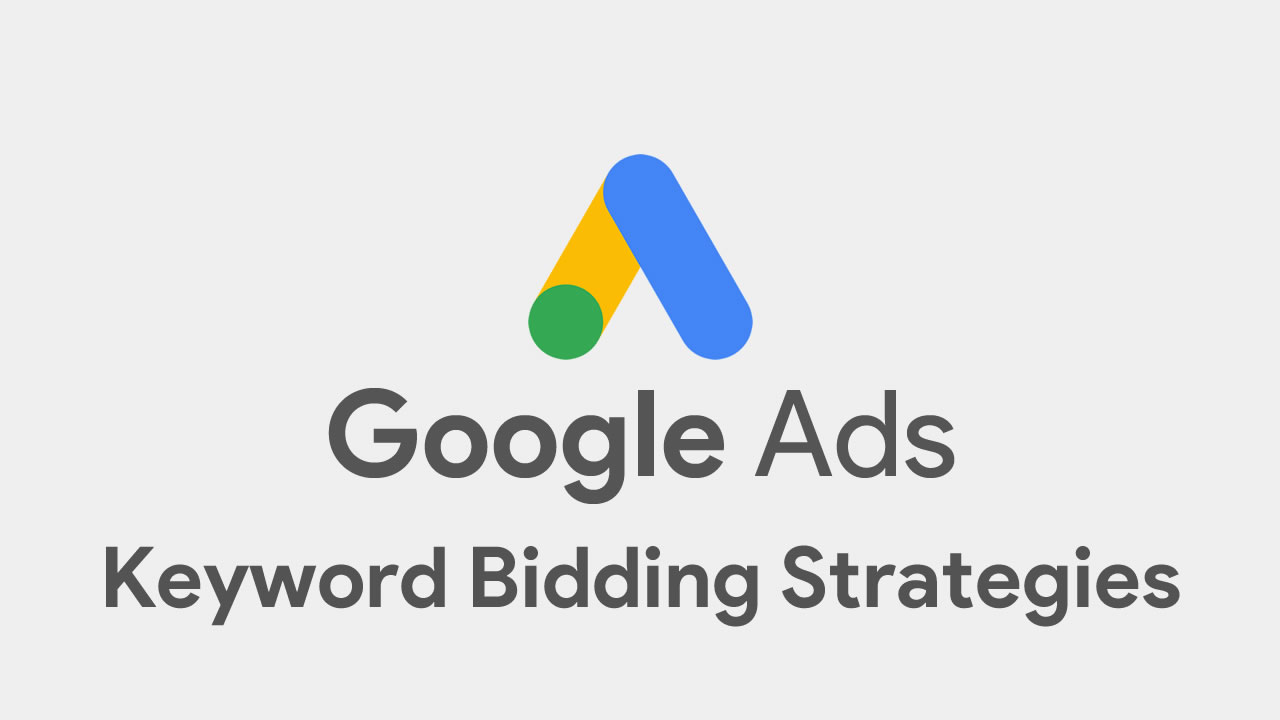When looking for solutions or products, most people turn to Google to find them. A quick search and they’ll see hundreds of options. So why should they click on yours? This is where the importance of your keyword bidding strategy becomes clearer.
Google is the biggest search engine in the world. It’s great for finding out information on any topic but more importantly, it’s a great way for consumers to find products and services that they need. None of this is a secret but that’s the problem – everyone is aware of the power Google holds which makes every industry extremely competitive.
So, what can you do to slingshot your ads above competitors’? We’re going to walk you through creating a Google keyword bidding strategy and some of the strategies that you can use to get ahead.
Getting Started with Keyword Bidding
Using Manual Bidding
Starting a Google Ads campaign for the first time and aren’t sure where to start with keyword bidding? We suggest you stick with a manual bidding strategy. The other option is automated bidding which is when Google’s algorithm takes care of it for you. There are benefits to that, but we’ll get into it later.
By manually selecting your bids you can see first-hand how your money is impacting the conversion rate. It also gives you a bit of freedom where you can try out different bids and find that sweet spot. Not to mention that if you’re new to Google Ads, this is a learning opportunity where you can see how things work.
So, start with manual bidding and you’ll get a good idea of what range you should be bidding on certain keywords, and that’s valuable data.
Deciding On a Starting Bid
Your starting bid varies on a lot of different factors. Your location, industry, target audience, and the specific product you’re selling, are all factors. In other words, we can’t give you a specific number.
What we can do is point you in the right direction. The short version: use keyword data along with the profitability of your products to decide which keywords are likely to get you the best ROI.
Don’t fall into the trap of thinking that all of these numbers are guaranteed. This is all historical data and although it’s safe to assume trends will continue, there are no guarantees in marketing.

We’d also suggest you look at the Google Keyword Planner. Sign into your Google Ads account and search Keyword Planner to get there.
Side tip: take a few hours to poke around Google Ads and look at the different tools you have at your disposal.
Having some familiarity with the platform will make you more comfortable with it. Not to mention that just knowing what you have access to will make running your first campaign a bit easier.
Here you can do 2 things: find new keywords or get data about specific keywords. Both are going to give you a ton of keyword data to work with.
We’re going to use our running example of dinosaur socks to give you a quick look at how both these tools work.

Discover New Keywords
If we go ahead and throw the keyword dinosaur socks into this tool, here’s what we get back.

The first thing we take note of is that there are 74 keyword ideas similar to what we entered. The data that we see is for the last 12 months of Google searches.
Now, you can go ahead and click the Columns button and switch up the layout so that you only see the data you want. But this is pointless if you have no idea what you’re looking at. So, you probably want to stick with the default settings until you get deeper into your campaign.

Back to our dinosaur socks example. We’ve got plenty of keywords to choose from for now, and you probably will too, but you need to consider the data.
All of these keywords have one thing in common: they’re highly competitive. You might think that their bid ranges aren’t too bad, but believe it or not dinosaur socks are cheap to make.
Remember, Google Ads uses a CPC (Cost Per Click) bidding model so if we sell our socks for $6 a pair and bid $0.34, we need at least a 5.6% conversion rate to profit. This is tricky to achieve in an industry where a 4% conversion rate is considered an achievement.
The point is, you need to comb through all of the keyword suggestions here and find the ones with potential. Know how much you need to make to profit from a sale and work out what metrics you need to get from a keyword to make it worth bidding on.
Get Search Volume and Forecasts
This tool gives you the same data as the discovery tool does, but it doesn’t give you extra keyword ideas to work with. If you already know what keywords you want to target (assuming you’ve already done the research with different PPC tools), you can use this and avoid scrolling the long list of suggestions.
We’ve thrown some of our dinosaur socks suggestions in there just so you can get an idea of what it looks like.

There isn’t much to add to what we’ve already said about the other tool included here. All this is, is the discovery tool without suggestions.
Bottom line: start using Google Ads’ Keyword Planner to ensure that you aren’t wasting your Google Ads bidding strategy on keywords that are unprofitable or worthless. Alternatively, check out SpyFu to see what your competitors are bidding on. Odds are, if they’re constantly bidding on certain keywords then those are the ones that are getting them the best results.
Switching to Automated Bidding
After running your Google Ads campaign for a few months you should be more comfortable with manual bidding. The next challenge: automated bidding.
A lot of amateur digital marketers are wary of letting a mystical algorithm take control of their money. There’s an element of trust that you need to have and the tough part of this is that you’re probably going to lose money (at first).
Why? Because the algorithm needs to learn.
It won’t know everything that you know about your audience at this point and it can only learn by you bidding on keywords and letting it work its magic. That doesn’t mean you’re going to be at a loss for months – it depends on the scale of your campaign. But, after just a week, you’ll see the performance improving.
One great thing about Google Ads is that you don’t have to only use one Google keyword bidding strategy. You can use automatic bidding on some campaigns and manual bidding on others. If you don’t want to commit all your ads just yet, test the waters with a few at first.
The level of control you have with your bidding goes deeper. You can go as far as having bidding strategies at the group level and portfolio level too.
Expert Tip: Compare Data from Different Bidding Strategies
After you make the switch from manual to automated bidding, don’t discard your data. Not that you should consider doing that anyway, but we’ve seen clients do this without giving it a thought.
When your campaign has been running with automated bidding for a week or two, compare its performance to the data from when you were manually bidding. If your new strategy isn’t getting the same or better results, don’t immediately switch back. This just means you need to make some adjustments to the strategy.
That said, if your campaign isn’t as profitable as it once was, a manual bidding strategy may be the better long-term option.
The final thing to note is that if you stick with automated bidding the campaign will eventually become self-sufficient. You’ll still need to closely monitor the data and your bids, and analyze campaign performance. But you’ll still be saving a lot of time.
Google Keyword Bidding Strategies
Now onto the strategies themselves.
There are a bunch of different keyword bidding strategies that you can adopt. We can’t say “this is the best one 100%” because your strategy will depend on your business, industry, and goals.
Read through each of these strategies and you can make an educated decision about which is the best suited.
1. CPC Keyword Bidding
One of the most common strategies that (almost) any business can use is CPC keyword bidding.
This strategy focuses on getting your ads as many clicks as possible, as cost-effectively as possible.
If you want to do it manually, just set the maximum CPC bid for each ad. This way has the benefit of letting you see which ads and keywords perform the best.
Alternatively, if you want to use automated bidding, all you need to do is set a daily maximum budget. Google then uses the data it has collected to maximize your clicks in a cost-effective manner. Again, automated bidding has the benefit of saving you time and energy, with the addition of using reliable data to spend your budget efficiently.
2. Focus On ROAS
Another strategy you can try is Target ROAS (Return On Ad Spend). This strategy focuses on meeting your target ROI (Return on Investment) rather than maximizing sales.
You’ll find this bidding option under Maximize Conversions and Maximize Conversion Value. The former helps to get more sales whereas the latter helps increase ROI.
As expected, this is a popular Google keyword bidding strategy among eCommerce businesses and one that we’d recommend for anyone in the eCommerce space. If you’re opening an online store and have a tight budget, you’ll want to be mindful of how cost-efficiently your budget is being spent – Target ROAS is the best strategy for this.
3. Search Page Location Targeting
Search Page Location Targeting is a particularly effective strategy for businesses that want to spread awareness, increase brand visibility, and just get their name out there.
This strategy handles all your bidding across multiple campaigns and aims to get your ads at the top of the relevant search results page.
While using this strategy can lead to amazing results, there’s a clear downside. Striving to be at the top of the page no matter what get’s very expensive very quickly. If you’re a start-up and want to give this a shot, it’s probably best to table this till later and try one of the other keyword bidding strategies for now.
4. Enhanced CPC Keyword Bidding
ECPC (Enhanced CPC) is a (semi-)manual Google keyword bidding strategy. You’ll be in control for the most part, but Google’s algorithm makes adjustments to your bids based on the likeliness of your ads being clicked.
We’ve found that this is a great strategy for promoting top-performing ads while reducing the effort that’s put into underperforming ads.
A technique that we use for some clients is running a regular CPC campaign before running an ECPC campaign. This lets us get some data to work with before switching to ECPC where the data is used to refine your bids right off the bat. This is an extra step but it can save some money and means there isn’t a waiting period at the start of the ECPC campaign.
5. Fully Automated Bidding Strategy
If you want a completely hands-off strategy then this is the one for you. Maximize Conversions is fully automated and requires minimal input from you. All you need to do is choose a CPC bid. Everything else is handled by Google.
Just like the CPC Keyword Bidding strategy, this strategy aims to maximize the number of clicks but with minimal user management. It goes without saying, even though this is automated you should still be monitoring your campaigns to see how they’re performing.
This strategy can be a hit or a mess. Google will spend your maximum budget regardless of the ROI. This means that your campaign could become less profitable or may even start losing you money. All you can do to avoid this is monitor your ads frequently to ensure things are on track and your budget isn’t dwindling away.
With any of these keyword strategies, any that are automated will require some level of monitoring. It’s not something that you can avoid without extreme risks. This is as automated as you’ll find.
6. Go Back to Manual Bidding
At the end of the day, if you’re here reading our guide on keyword bidding strategies, the chances are that you don’t know a lot about them or are struggling with your campaign. This is something every marketer has to go through. It’ll take time to figure out the best strategy for you and your best option could be to switch back to Manual Bidding.
This doesn’t have to be a temporary change. The fact is, as growth-driven as they are, most amateur marketers quickly get overwhelmed.
Manual bidding is the easiest to understand and gives you more time to learn about other aspects of Google Ads that are just as important. You’ll pick up a lot of information about how the platform works this way.
Sure, more time will be spent managing your campaigns, but it gives you the ease of mind that things are running well and exactly as you want them to.
Conclusion
Properly utilizing any keyword bidding strategy will prepare you for success and lead you to the profits. Some strategies require more tinkering than others, but if you have a good understanding of Google Ads you can get great results from any of them.
Unsure about which strategy to choose? You’ve got two options.
First, you could try out some different strategies and see which works best. Second, you could hire a Google Ads agency and let them take the burden. KonvertLab specializes in Google Ads and with our knowledge of bidding strategies, we can set you up for success. Book a call below and let’s get started.

